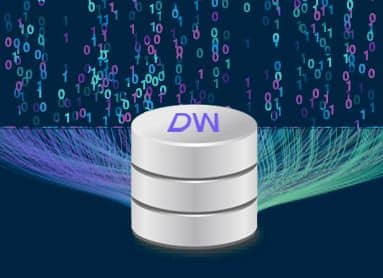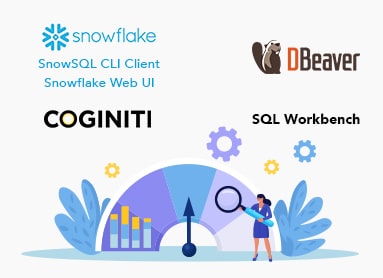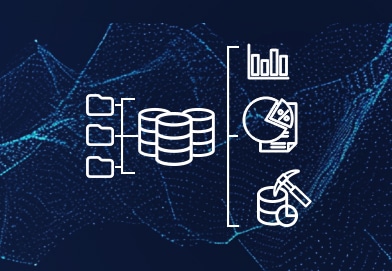Data is an asset to any business. Accessing, analyzing, and utilizing data effectively is crucial for making informed business decisions. However, the data’s sheer volume and complexity can make it challenging to derive meaningful insights. This is where dimensional data modeling comes into play.
Dimensional data modeling organizes and presents data to make it easy for business analysts and other business users to analyze and understand. It has been used for several decades and is widely recognized as the standard approach for building business intelligence and analytics systems. It is an essential aspect of data warehousing, enabling businesses to optimize their decision-making process by providing accurate and comprehensive data.

In this article, we will explore dimensional modeling in depth. We will start by defining what dimensional data modeling is, discussing the different methodologies that exist, the techniques used, and understanding its benefits. Then, we will outline the steps involved in implementing dimensional modeling in data warehousing. We will also discuss the challenges of dimensional modeling and the right questions to ask. Finally, we will look at the tools and technologies available for dimensional modeling and discuss why it is a critical aspect of data warehousing.
What is Dimensional Modeling?
Dimensional modeling is a data modeling technique used in data warehousing that allows businesses to structure data to optimize analysis and reporting. This method involves organizing data into dimensions and facts, where dimensions are used to describe the data, and facts are used to quantify the data.
For instance, suppose a business wants to analyze sales data. In that case, the dimensions could include customers, products, regions, and time, while the facts could be the number of products sold, the total revenue generated, and the profit earned.
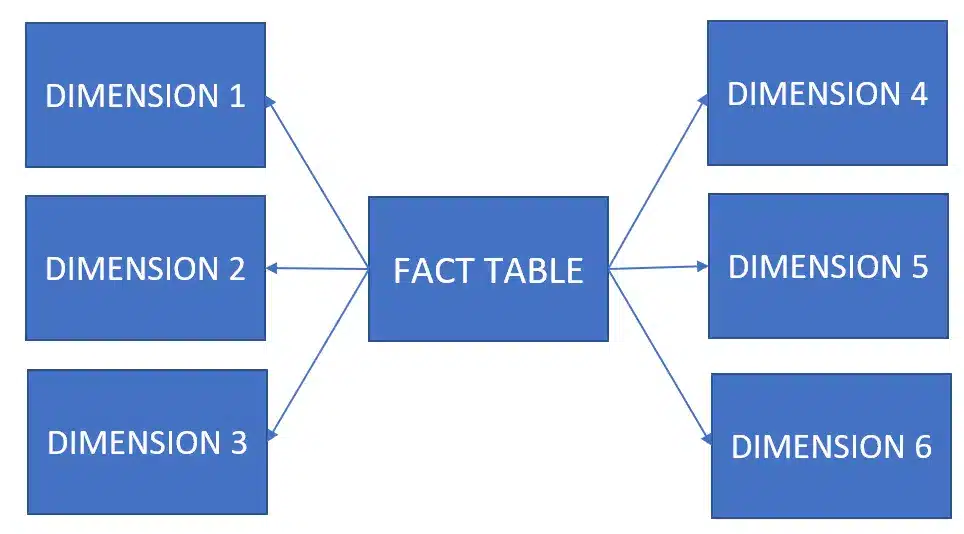
The data is then structured into a star or snowflake schema, with the fact table at the center and the dimension tables connected via foreign keys. Each dimension table contains descriptive attributes that describe a specific aspect of the fact table.
Dimensional modeling is used primarily in data warehousing, where it enables businesses to build a centralized repository of data that can be accessed and analyzed to support their decision-making process. It is also used in business intelligence and analytics, enabling businesses to extract insights and make data-driven decisions.
Dimensional Modeling Techniques
There are two primary techniques used in dimensional modeling:
Star Schema
The star schema is the simplest and most common dimensional modeling technique. In a star schema, the fact table is at the center and connected via foreign key(s) to the dimension tables. The fact table contains the numerical values or metrics being analyzed, while the dimension tables have the attributes that describe the data.
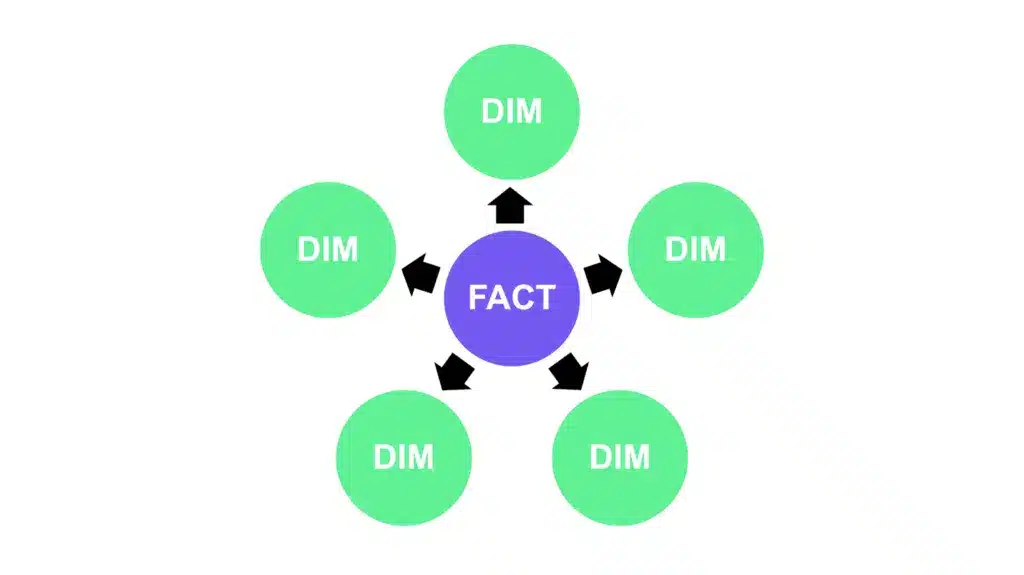
For instance, in the sales data example mentioned earlier, the fact table could contain the total revenue generated and the profit earned. In contrast, the dimension tables could have the attributes such as customer name, product name, region, and time.
The star schema is a straightforward and efficient method of dimensional modeling that is easy to understand and use. It is suitable for data warehouses that require fast and efficient queries.
Snowflake Schema
The snowflake schema is a more complex dimensional modeling technique used when there are multiple levels of granularity within a dimension. In a snowflake schema, the dimension tables are normalized, meaning they are split into multiple tables to reduce data redundancy. This normalization results in a more complex schema that resembles a snowflake, hence the name.
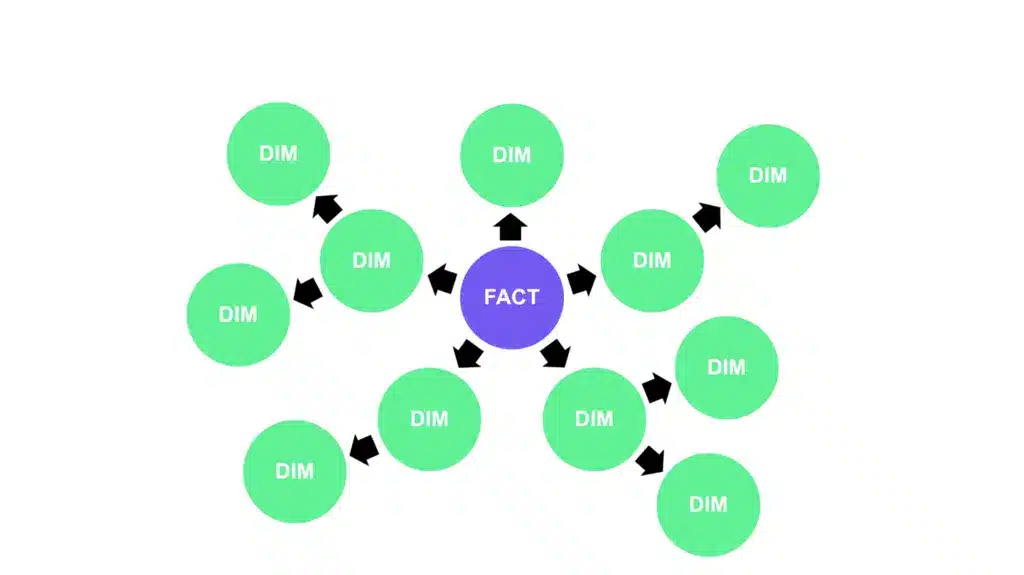
For instance, the customer dimension table could be normalized in the sales data example to include separate tables for customer and address information.
The snowflake schema suits large, complex data warehouses requiring extensive data analysis and reporting. However, it can be more challenging to use and maintain than the star schema.
Dimensional Modeling Techniques
Kimball and Inmon are two popular methodologies for data warehousing and dimensional modeling.
The Kimball methodology, known as the dimensional modeling methodology, focuses on building optimized data warehouses for reporting and analysis. The method emphasizes using star schemas and dimensional modeling techniques, which involve creating fact and dimension tables to organize data into a logical and easy-to-understand structure. This methodology aims to provide a flexible and scalable data model that can support various reporting and analytical needs.
On the other hand, the Inmon methodology, also known as the Corporate Information Factory (CIF) methodology, focuses on building a centralized data repository that serves as the single source of truth for all enterprise data. The process emphasizes using normalized data models and data integration techniques to create a consistent and reliable data model. This methodology aims to create a robust and scalable data infrastructure that can support various business needs.
Benefits of Dimensional Modeling
Dimensional modeling is a valuable technique for organizing and analyzing data in a way that supports efficient querying, complex analysis, and informed decision-making. It provides a clear and consistent structure that enhances data quality and facilitates scalability, making it an essential tool for data warehousing and business intelligence. Dimensional modeling is also very flexible and adaptable. New dimensions and measures can be easily added to the dimensional data model as the business requirements change. This makes it easy to keep the data warehouse up-to-date and relevant to the business needs. Here are some benefits of using dimensional modeling in a data warehouse:
Improved Performance
Dimensional modeling provides better query performance because it simplifies the schema and eliminates unnecessary joins. Queries can be executed faster because they involve fewer tables.
Enhanced Flexibility
Dimensional modeling provides greater flexibility, allowing data to be easily added or removed from the warehouse without impacting the existing schema. This means that organizations can quickly respond to changes in their business needs and adapt their data warehouse accordingly.
Improved Usability
Dimensional modeling is user-friendly because it organizes data in a way that is easy to understand and use. This makes it easier for users to access and analyze the necessary data.
Increased Scalability
Dimensional modeling is scalable because it allows organizations to add new dimensions or facts to the data warehouse. This means organizations can expand their data warehouse to meet growing data demands without redesigning the entire schema.

Documentation
Data modeling provides clear and structured documentation of an organization’s data. It helps to ensure the accuracy, consistency, and reliability of the data while also identifying potential issues. Additionally, data modeling can improve communication between different stakeholders, leading to better decision-making and business outcomes.
Steps to Implement Dimensional Modeling
The following are the steps involved in implementing dimensional modeling:
1. Identify the Business Process
The first step in implementing dimensional modeling is to identify the business requirements and the business process that the data warehouse will support. This involves determining business objectives that need to be supported by the key performance indicators (KPIs) that will be used to measure the success of the process.

2. Determine the Data to be Analyzed
Once the business process has been identified, the next step is determining what data needs to be analyzed. This includes identifying the relevant data sources and the specific data elements that must be included in the model.
3. Identify the Dimensions
The third step is to identify the dimensions that will be used to describe the data. These dimensions should be based on the KPIs identified in step one and relevant to the business process.
4. Identify the Facts
The fourth step is to identify the facts that will be analyzed in the data warehouse. These facts should be based on the KPIs specified in step one and relevant to the business process.
5. Identify the Grain
The grain refers to the level of detail at which the data will be stored and analyzed. For example, in a sales data model, the grain might be at the level of individual sales transactions or at the level of daily sales totals. Identifying the grain is important because it determines the level of detail at which the data will be stored and can affect the performance and usability of the data model.
6. Design the Schema
The final step is to design the schema. This involves creating a fact and dimension tables based on the dimensions and facts identified in steps three and four.

7. Populate the Data Warehouse
The sixth step is to populate the data warehouse with data from the source systems. This involves extracting, transforming, and loading (ETL) the data into the data warehouse.
8. Test the Data Warehouse
The final step is to test the data warehouse to ensure it meets the requirements identified in step one. This involves running queries against the data warehouse to ensure the data is accurate, complete, and consistent. Identifying and addressing any issues during testing is essential to ensure the data warehouse is functioning correctly.
Challenges in Dimensional Modeling
Dimensional modeling can be a challenging task that requires careful consideration and planning. Some of the challenges in dimensional modeling include:
Changing Business Requirements
Business requirements may change over time, which can impact the data model. This requires close collaboration between the business stakeholders and the data modeling team. Also, it is essential to ensure that the data model is flexible and can accommodate changes in business requirements.
Data Complexity
Data can be complex, with multiple sources and formats. The challenge is creating a dimensional model to accommodate this complexity while ensuring the data is accurate, consistent, and complete.
Data Quality
One of the biggest challenges in dimensional modeling is ensuring data quality. If the data is not accurate or complete, the analysis and reporting may be incorrect, leading to wrong business decisions. It is essential to ensure the data is clean, complete, and consistent before beginning the modeling process.
Data Consistency
Data consistency is crucial in dimensional modeling, ensuring the data is accurate and reliable. The challenge is maintaining data consistency across multiple data sources and ensuring that the dimensional model is updated as new data becomes available.
Data Governance
Data governance is critical in dimensional modeling, ensuring that the data is managed and used responsibly and competently. The challenge is creating a dimensional model compliant with the relevant regulations and industry standards while providing the data is accessible, secure, and protected from unauthorized access.

The Right Questions to Ask For Successful Dimensional Modeling
To create effective dimensional models, it is vital to ask the right questions. Here are some questions to consider:
Who will be involved?
When embarking on a data modeling project, it is essential to consider who will be involved and the key business stakeholders. The stakeholders may include executives, managers, department heads, and other individuals interested in the data being modeled. In contrast, the project may consist of data analysts, database administrators, IT staff, and business analysts.
What are the Business Requirements?
The first step in dimensional modeling is to identify the business requirements. What are the key performance indicators (KPIs) need to be measured? What are the business objectives that need to be supported? What are the critical business processes that need to be modeled?
What Data Needs to be Collected?
Once the business requirements are understood, the next step is to identify the data that needs to be collected. What data sources will be used? What data formats will be used? What data quality controls need to be in place?
How Will the Data Be Structured?
The next step is to determine how the data will be structured. Will a star schema or snowflake schema be used? How will the dimensions and facts be defined? What attributes will be included in the dimension tables?
How Will the Data Be Integrated?
Dimensional modeling involves integrating data from multiple sources. How will the data be integrated? What data transformation and cleansing will be required? What data validation and verification will be required?
How Will Data Governance Be Managed?
Data governance is essential in dimensional modeling. How will data governance be managed? What policies and procedures will be in place to ensure data quality and compliance? What controls will be in place to ensure data security and privacy?
Tools and Technologies for Dimensional Modeling
There are several tools and technologies available for dimensional modeling. These include:
DBT
DBT (Data Build Tool) is a popular open-source tool for implementing dimensional modeling and managing data transformation pipelines. It enables businesses to define their data models as code, automate data transformation, and test and validate the data to ensure its accuracy and completeness.
Data Modeling Tools
ER/Studio Data Architect, SAP PowerDesigner, Microsoft SQL Server Analysis Services, IBM Cognos Analytics, Oracle Data Integrator, and SAP Business Warehouse are powerful tools for creating and managing data models. These support the star, snowflake, and other data modeling techniques.
Cloud Services
Cloud services such as Amazon Web Services (AWS) and Google Cloud Platform (GCP) provide businesses with the infrastructure and tools needed to implement dimensional data modeling and create data warehouses in the cloud. These services offer benefits such as scalability, flexibility, and cost-effectiveness.
Data Warehousing and Dimensional Modeling
Data warehousing is collecting, storing, and managing data from multiple sources to support business analysis and reporting. Dimensional modeling is a critical aspect of data warehousing, as it enables businesses to structure their data to support practical analysis and reporting. Dimensional modeling benefits data warehousing by providing a structure optimized for query performance and helping businesses to analyze data from multiple perspectives. It also allows companies to easily add new data sources and dimensions as their needs change.

Dimensional modeling enables businesses to improve their data warehouse performance, flexibility, usability, and scalability. By organizing data into fact and dimension tables, companies can enhance their data visualization strategy by using visualization tools such as Tableau, Google Data Studio and quickly analyze data from multiple perspectives and gain insights to inform business decisions. While dimensional modeling can be challenging, asking the right questions and using the proper dimensional modeling techniques and tools can help businesses create effective data models that meet their business requirements.
At Data Sleek, we understand the importance of dimensional modeling in data warehousing. Our team of experienced professionals has helped our clients implement this technique to improve their data management and decision-making processes. We can help you get started in optimizing your data analytics and reporting processes through the use of this powerful technique. Contact us now!











